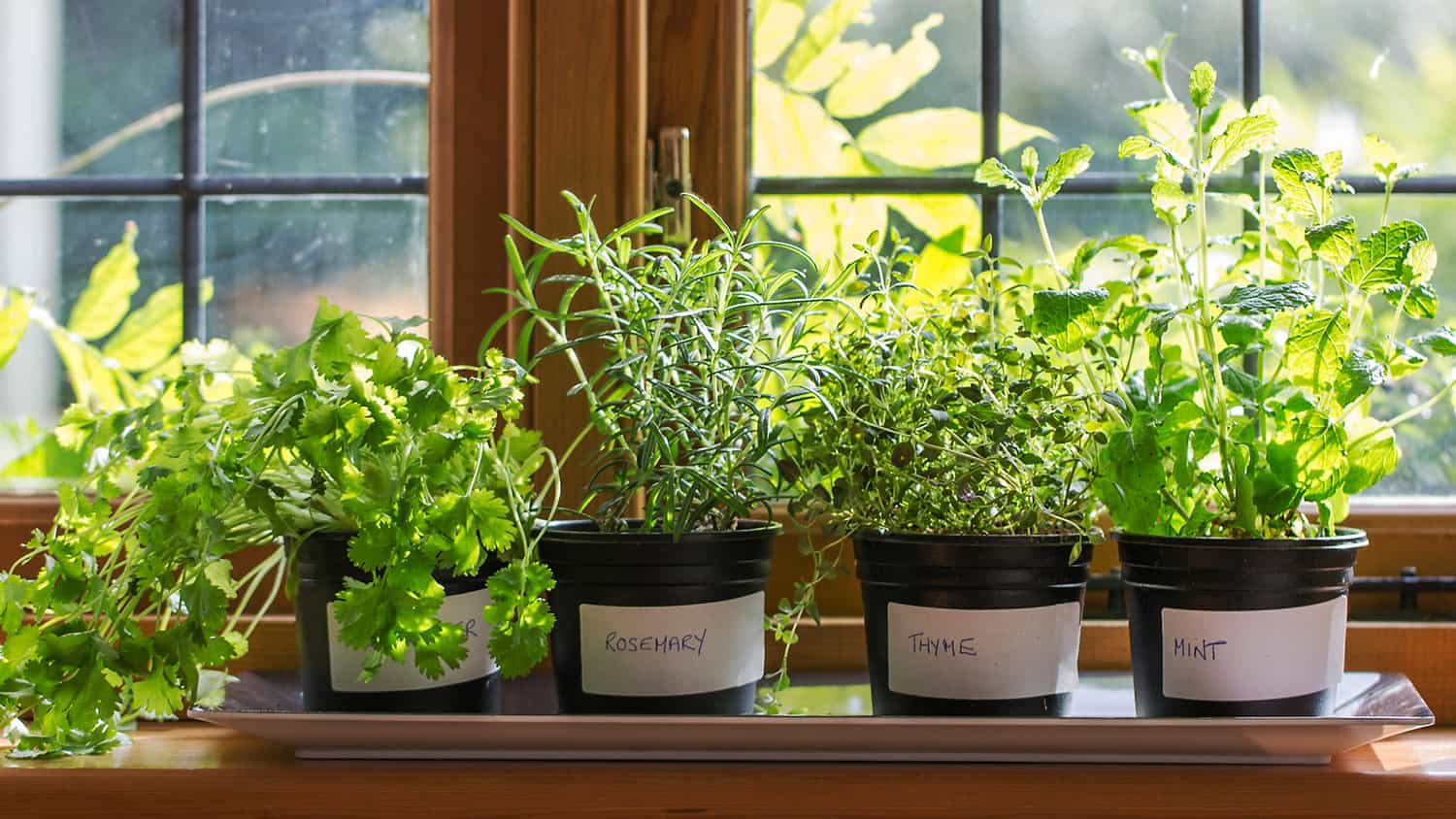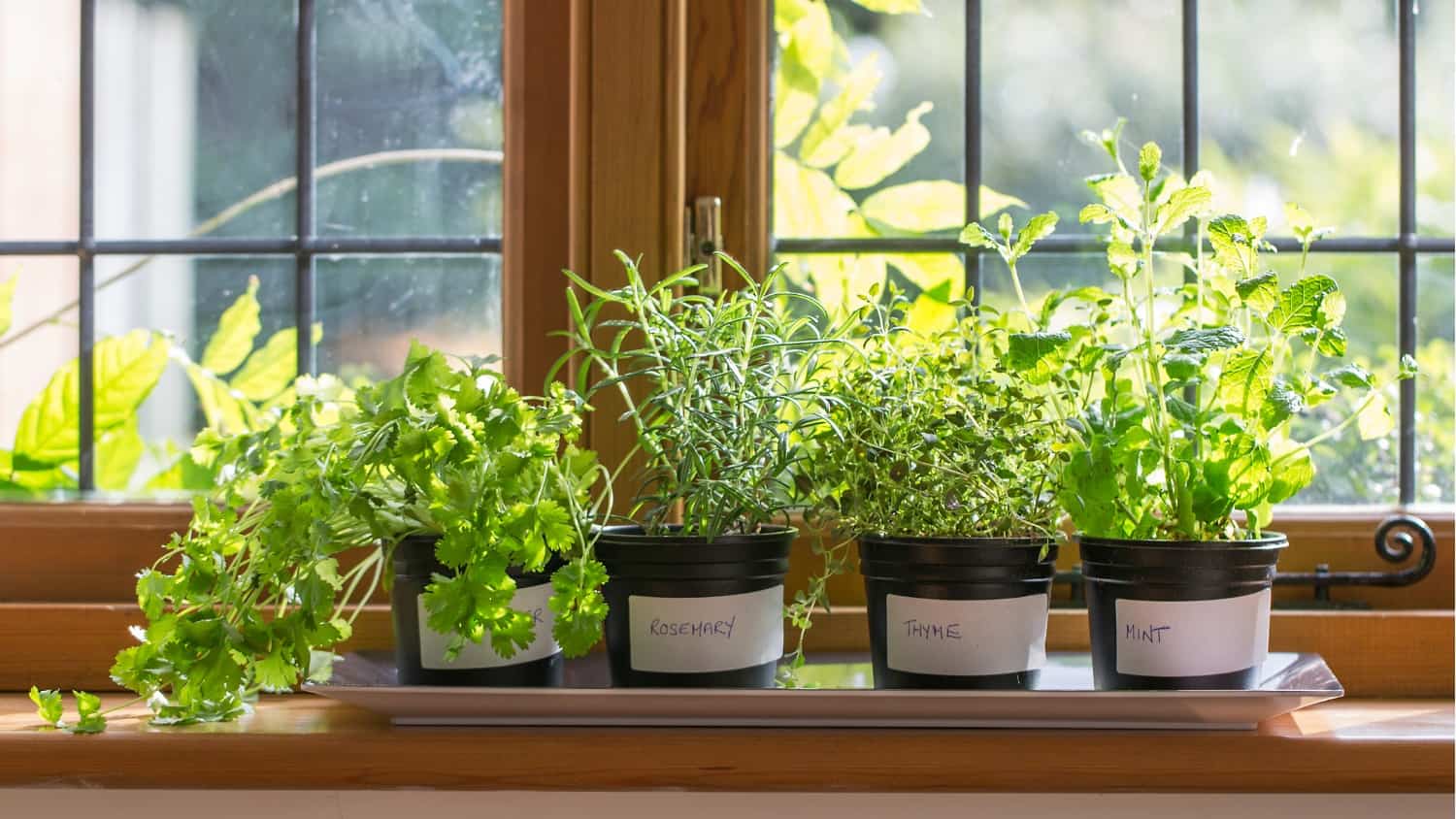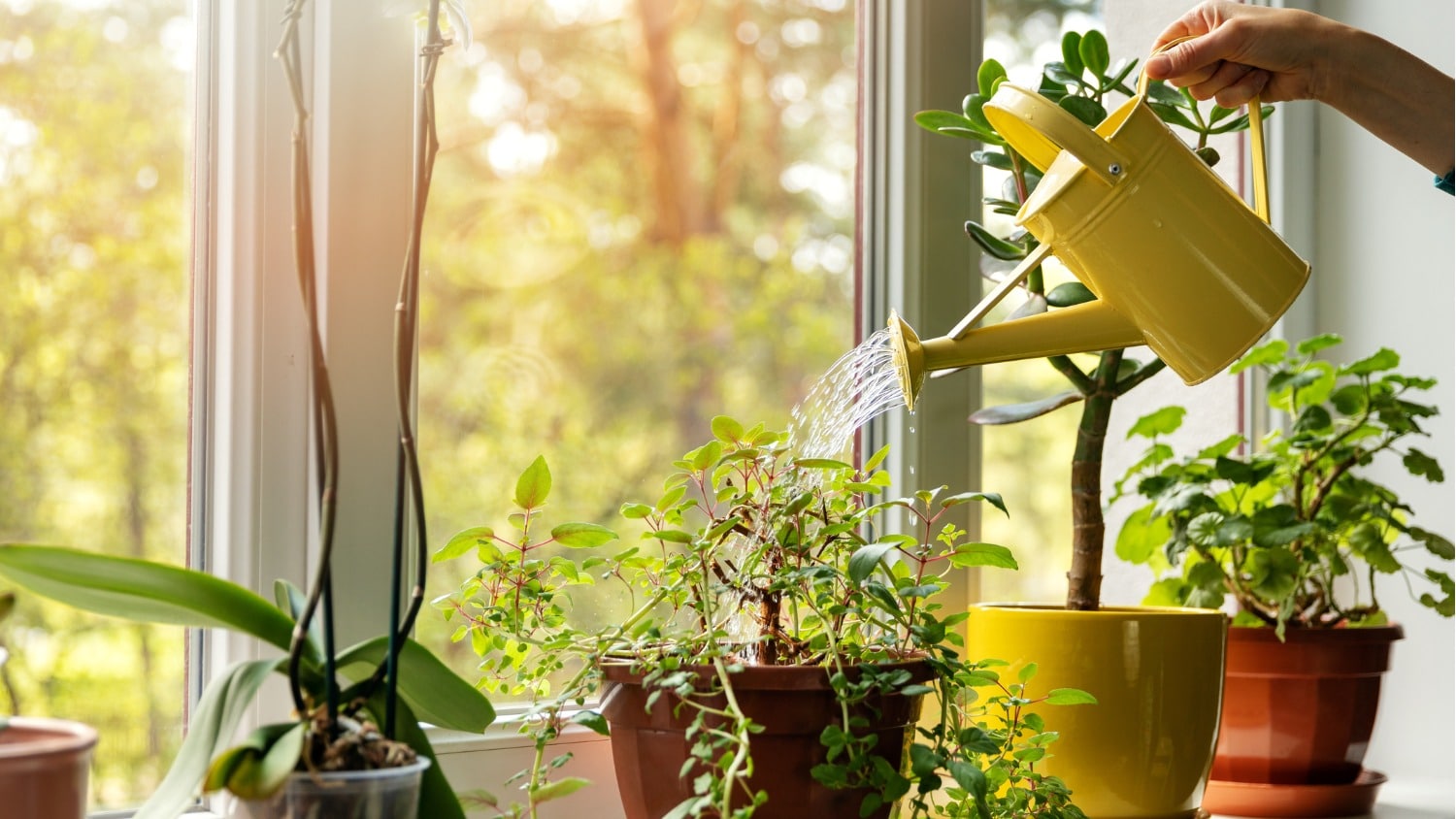
5 Useful Tips for Growing Fresh Herbs on Your Windowsill
Add some homegrown flavor to your winter meals. Grow a few of your favorite herbs on a sunny windowsill or under artificial lights. Start with a few of the herbs you commonly include in your favorite recipes and those that are easy to grow.
Growing Fresh Herbs Indoors
Basil is a favorite in a variety of dishes. It is a bit particular about its growing conditions, needing bright light and a warm spot free of hot and cold drafts. But having fresh basil in winter is worth the extra effort.
Oregano also prefers bright light but is more tolerant of fluctuating temperatures. Regular harvest will encourage compact growth.
Sage also needs bright light and tolerates fluctuating temperatures and dry soil. A good choice for busy gardeners
Chives are an easy one to grow indoors. They tolerate a bit less light than the first three. Although chives tolerate dry soil, yellow-tipped leaves are its way of telling you to reduce the days between watering.
Mint needs about the same light as chives but does not tolerate blasts of hot air and needs moist soil. Give it the care it needs and you should have plenty of mint for tea, desserts and more.
Rosemary can be a bit challenging. Many gardeners report failing their first few attempts, myself included. But once you find the right formula you will be growing enough rosemary for your favorite recipes and fragrant bouquets. Grow in bright light and water thoroughly whenever the top inch or so starts to dry. I found the key to success was placing it in a cool location where I passed by often, which reminded me to water it.
Thyme is another easy herb to grow indoors. It needs a bit less light than oregano but regular harvesting will also encourage compact growth.
Parsley is more than a garnish; it is a source of vitamin C and a less intense substitute for cilantro. Grow in bright light and water thoroughly when top inch begins to dry.
Where to Purchase Herbs
Visit your favorite garden center when starting your windowsill herb garden. You will need to purchase your planting supplies, and they just might have some herb plants for sale. Otherwise, check the produce department at your grocery store. Many sell herb plants year round.
You can also start herbs from seeds. It is fun but does require a bit more work and you’ll have to wait longer for your first harvest. Check with your favorite garden center or seed catalogue. Be sure to read and follow planting information on the seed packet when starting herb plants from seed.
How to Plant
You can plant each herb in its own pot or combine several in one larger container. Make sure the pot has drainage holes and don’t forget the tray or saucer to protect your woodwork.
Fill the pot with a well-draining potting mix and plant herbs at the same depth they were growing in their original container.
Use a variety of plants to create an attractive display when growing several together in a pot. Try arranging the plants on the soil surface before planting.
Tall plants like basil and chives make nice vertical accents. Tri-color and golden sage add color to the mix. Curled parsley is a favorite that adds texture to your windowsill garden. Try adding a few trailing plants like creeping rosemary or lemon thyme.
Ongoing Care
Place your garden in front of a south- or west-facing sunny window away from drafts of hot and cold air. Water thoroughly and pour off the excess to avoid root rot. Or place stones in the saucer or tray to elevate the pot above the excess water that collects.
Allow the top inch of soil to dry slightly before watering again. Basil and mint like it a bit moister so check these more often and water often enough to keep the soil slightly moist but not soggy wet.
Harvesting Your Fresh Herbs
Allow your plants to adjust to their new containers before you begin harvesting. Once the plants are rooted in and at least six inches tall you can begin harvesting.
Use a pair of sharp garden scissors or pruners for harvesting. Cut just what is needed and remove no more than one third of the plant. Rinse off the clippings and remove tough stems and bad leaves. Add these discards to your compost pile or worm bin.
Adjust the quantity of fresh herbs used in cooking to allow for variations in flavor intensity and your family’s preference. In general, you will need two to three times more fresh as dried herbs. So, if the recipe calls for one teaspoon of dried parsley use three teaspoons of the fresh parsley leaves.
Put your green thumb to work this winter. Plant a few herbs and get ready to enjoy some homegrown seasonings in your winter meals.
Let’s Have a Conversation:
Have you ever tried growing fresh herbs? What is your favorite herb? How do you use it in your homemade meals? Please share in the comments.
Tags Gardening







Sadly move to a new home and neglecting my five year old rosemary plant. I miss not having it indoor now. I will have to find a new one for this winter. Basil is a challenge for me. It grows but gets infected and dies.
Infected with what? It’s the one I most want to try so it would be useful information. Thanks.